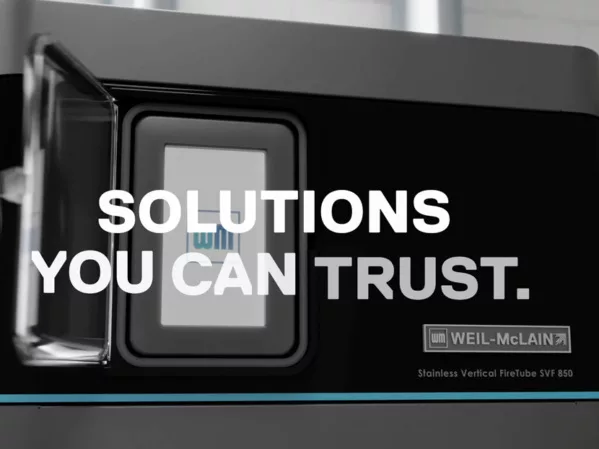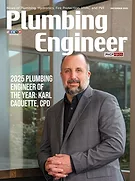At-home water treatment continues to be seen as a significant part of the immediate solution in Flint, Michigan, while the city continues to address the lead contamination in their drinking water supply. The overall sense is a lot of people have questions about their water and how it can be tested and treated. Common questions include: How do I know the water is safe/unsafe to drink? Does this [insert treatment technology] work to remove lead? Where can I find professional help with installing treatment?
In February, the Water Quality Association (WQA), along with PUR, manufacturer of water filtration systems, traveled to Flint to volunteer time answering questions from local residents and providing educational materials.
Public education resources on lead and water treatment
WQA is committed to addressing issues affecting water quality. We support the use of certified water treatment products for final barrier protection at the home as lead in drinking water continues to be a pressing issue in towns all around the U.S. WQA is a non-profit association, representing the residential, commercial, and industrial water treatment industry, with over 2,700 members. We have technical staff and water treatment professionals ready to help with a solution to this water crisis.
WQA operates several programs to help provide education and resources to help the public make educated decisions. In Flint, the focus was answering frequently asked questions on lead, explaining what water treatment is and how it can be used as a part of the solution, and how to find water treatment professionals in their area.
Materials we brought to Flint included:
- “Water Treatment for Dummies” booklets to provide an overview of treatment technologies
- Fact sheets on common contaminants, including lead, to as more technical content
- Information on testing and certification of drinking water treatment products
- Handouts on training and professional certification for professionals in the drinking water treatment industry
- Information about a searchable database that connects consumers to water treatment professionals in their area
To control the pollutants, such as lead, entering the water after leaving a municipal treatment facility or private well, point-of-use and point-of-entry (POU/POE) — at the tap or whole house water treatment — can serve as a final barrier to ensure everyone has safe drinking water. Infrastructure improvements are not always affordable, and, even when they are, it takes time to plan and successfully implement those improvements. POU/POE treatment provides a viable solution for communities that cannot immediately implement infrastructure improvements. By helping everyone receive the treatment they need exactly where they need it, communities can protect public health in a cost-effective and reliable way.
Legislation on the horizon
Continuous monitoring and public notification when a contaminant, such as lead, exceeds the action level set by the EPA provides essential communication to residents. Senator Sherrod Brown (D-OH) and Senator Rob Portman (R-OH) introduced Senate Bill 2535 in February to go a step further, to provide guidance on remediation.
The proposed legislation requires, no later than seven days after the date on which an exceedance notice is provided to the public, the state that has primary enforcement responsibility will need to provide a short-term remedy, including bottled water or a water treatment system, to each affected household. POU/POE water treatment systems provide a feasible solution that can be implemented immediately after a notification. There are several third-party certified products to remove lead, providing dependable options.
Filters certified to reduce lead
Multiple types of water filters have been certified through the WQA Product Certification Program to reduce lead in drinking water.
Filters certified to NSF/ANSI Standard 53 Reduction Claims for Drinking Water Treatment Systems must:
- Pour through pitcher/carafe — Water drips through a filter in a water pitcher using gravity.
- Faucet mount — Mounts on kitchen faucet and uses diverter to direct water through a filter.
- Countertop connected to sink faucet — Connects to existing sink faucet through a hose/tubing.
- Plumb into separate tap or to kitchen sink — Installs under a sink; filtered water is usually dispensed through a separate faucet directly to the kitchen sink.
- Filters certified to NSF/ANSI Standard 58 Reduction Claims for Reverse Osmosis Drinking Water Treatment Systems: Reverse Osmosis (RO) — Connects to your plumbing under the sink and uses a membrane filter to reduce lead; also can reduce minerals and total dissolved solids.
Look for the WQA mark to find out if a filter or cartridge is certified. It must say NSF/ANSI 53 or NSF/ANSI 58 for lead claim to be sure it reduces lead. Products with WQA’s Gold Seal have been rigorously tested for safety and performance, ensuring that they are actually effective for the contaminants which are covered by the marketing claims. Factory audits are performed by WQA on a regular basis to ensure there are no changes to the product that negatively impact safety or performance.
Kathleen Fultz is the coordinator of Regulatory and Government Affairs at the Water Quality Association (WQA). WQA is a not-for-profit trade association representing the residential, commercial, and industrial water treatment industry. To best serve consumers, industry members and government officials, WQA has an ongoing dialogue with other organizations representing all aspects of the water treatment industry. Since 1959, the WQA Gold Seal product certification program has been certifying products that contribute to the safe consumption of water. The WQA Gold Seal program is accredited by the American National Standards Institute (ANSI) and the Standards Council of Canada (SCC). Learn more about WQA at www.wqa.org, and PUR at www.pur.com. Fultz can be reached by email at [email protected].





